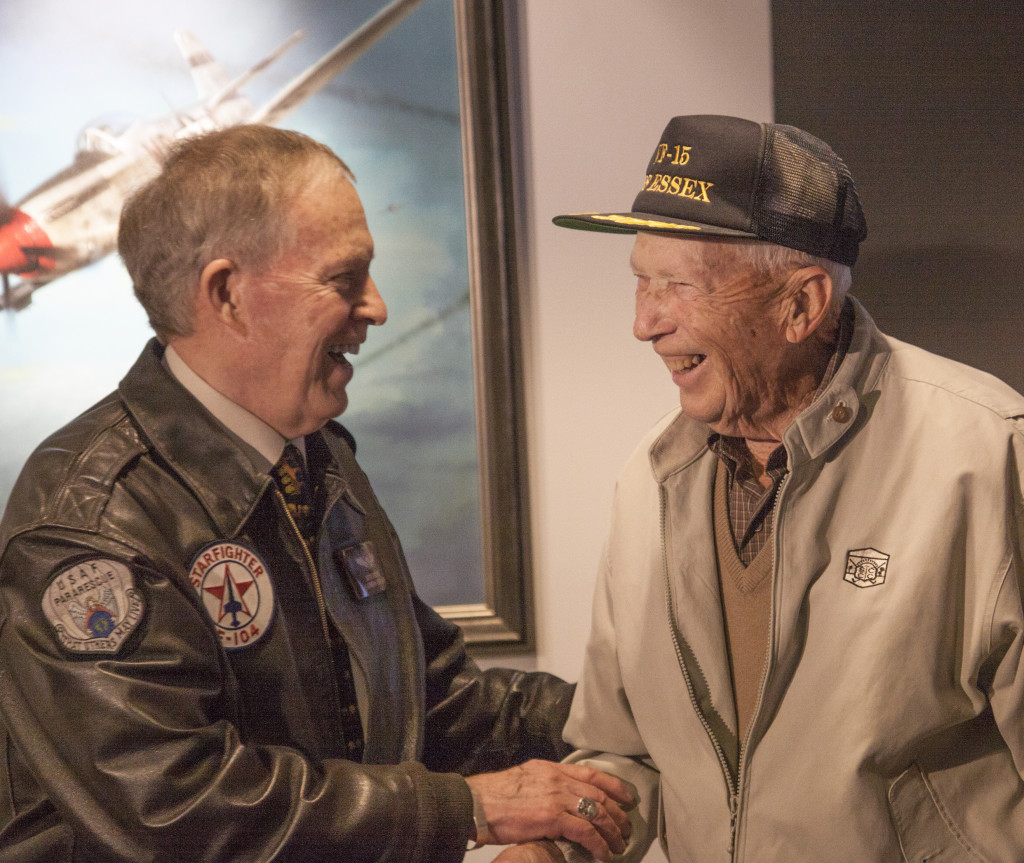WASHINGTON, D.C. — In the early morning of Oct. 12, 1944, Navy pilot Ensign Clarence Borley had just shot down his fifth Japanese aircraft over the island of Formosa — present-day Taiwan — when anti-aircraft fire forced him to ditch his F6F Hellcat into the Pacific. Clinging onto his life raft for five days, he was blown by a typhoon 75 miles out to sea before a submarine picked him up.
Eight thousand miles away and nearly 70 years later, Borley and 76 other surviving flying aces were awarded the Congressional Gold Medal — Congress’ highest civilian award — on Wednesday by leaders of the House and Senate in a packed Emancipation Hall on Capitol Hill.
“It’s not just what they did, but how they did it,” said Speaker of the House John Boehner, R-Ohio. “It’s a reminder that nothing worth fighting for ever came easy.”
There have been more than 60,000 fighter pilots in American history, yet only 1,447 have earned the distinction of “ace,” meaning a fighter pilot whose skill and valor resulted in the destruction of five or more enemy aircraft.
Yet their numbers are dwindling. On average two of these elite veterans die each month.
The youngest of them, Air Force Brig. Gen. Richard Steven Ritchie, served in Vietnam and is now 72. He is expected to be the last such ace.
In an era of stand-off air-to-air weaponry, the days of grueling dogfights that were the hallmark of 20th Century aviation warfare are at a close.
From open-cockpit biplanes in World War I to powerful jets over Southeast Asia, these battles were fought by men barely old enough to vote.
“Here are some things you might not expect to hear [from young 20-year-olds]: I cheated death, tore through Hitler’s Luftwaffe like tissue paper, received a Silver Star, a Distinguished Service Cross, two Flying Crosses, and a Purple Heart for good measure,” Senate Majority Leader Mitch McConnell, R-Kent., said.
The ceremony at the Capitol was convened by Seattle’s Museum of Flight, home to the American Fighter Aces Association.
The museum brought together more than 20 volunteer pilots and a fleet of small and mid-size jets to fly more than three dozen of the surviving aces and their families to Washington, D.C.
“All these men had an outsized impact on the air war that they fought in,” AFAA president and fellow ace Air Force Lt. Gen. (ret.) Charles Cleveland said.
“They are people who saved lives and shortened wars; they will never be forgotten.”








